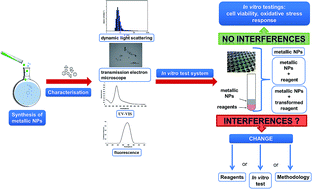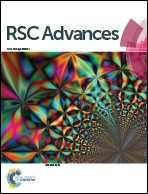Does surface coating of metallic nanoparticles modulate their interference with in vitro assays?†
Abstract
Screening programs for the evaluation of nanomaterial value and safety rely on in vitro tests. The exceptional physicochemical properties of metallic nanoparticles (NPs), such as large surface area and chemically active surface, may provoke their interference with in vitro methods and analytical techniques used for evaluation of biocompatibility or toxicity of NPs. This study aimed to determine if such interference could be predicted on the basis of the surface characteristics of metallic NPs by investigating the effect of different surface coatings of silver (AgNPs) and maghemite NPs (γ-Fe2O3NPs) on common in vitro assays scoring two of the main cytotoxic endpoints: cell viability and oxidative stress response. We examined optical, adsorptive and chemically reactive types of NP interference with cell viability assays (MTT, MTS, and WST-8) and assays employing fluorescent dyes as markers for production of reactive oxygen species (DCFH-DA and DHE) or glutathione level (MBCl). Each type of tested NPs affected all of the six investigated assays leading to false interpretation of obtained results. The extent and type of interference were dependent on the type and surface coating of NPs as well as on their stability in biological media. The results have shown that interference was concentration-, particle type- and assay type-dependent. This study demonstrated that common in vitro assays, without appropriate cause-and-effect analysis and adaptation or modification, are ineffective in the evaluation of biological effects of metallic NPs due to their interaction with optical readouts and assay components. A comprehensive and feasible experimental setup has been proposed to gain a reproducible and reliable in vitro evaluation as the first step in the health assessment of metallic NPs.


 Please wait while we load your content...
Please wait while we load your content...